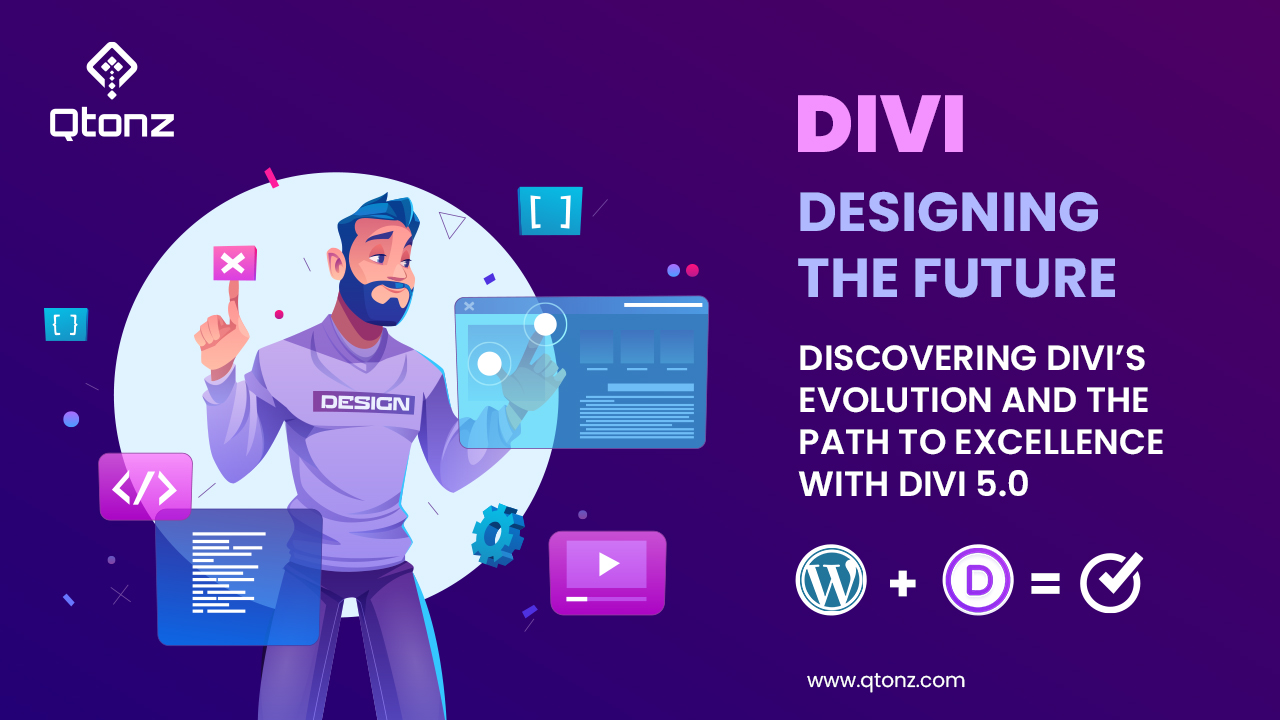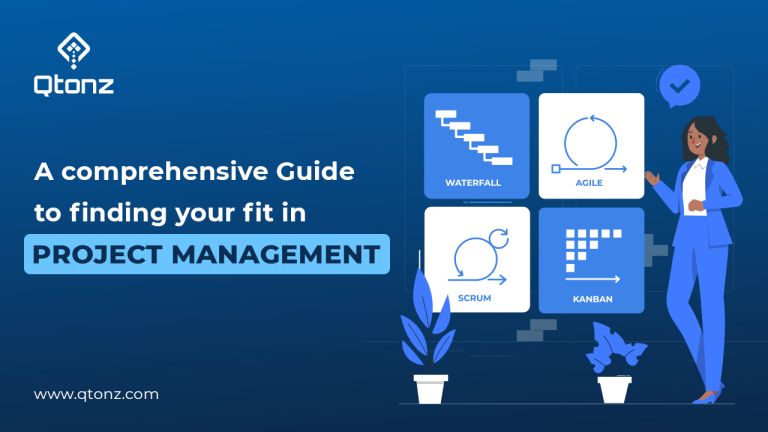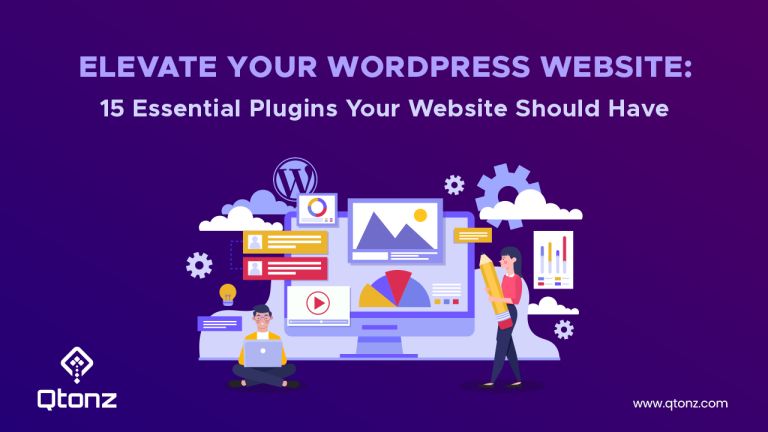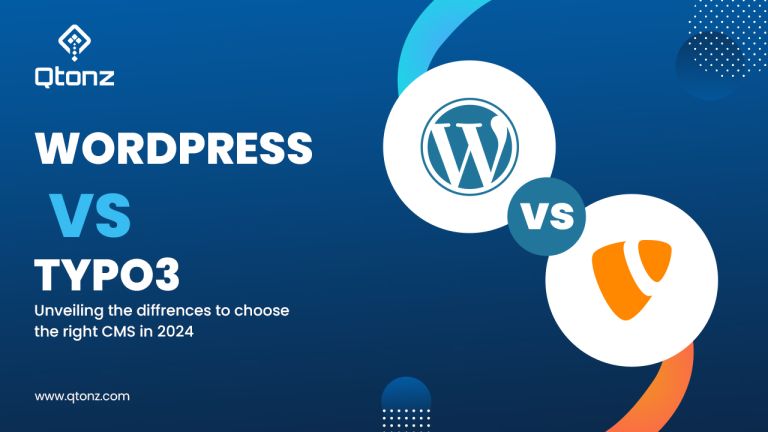Introduction
In the world of website building and design, Divi has emerged as a revolutionary platform, empowering users to create stunning websites with ease. With each new iteration, Divi has evolved, introducing exciting features that have propelled it to the forefront of the industry. In this blog post, we will explore the evolution of Divi and delve into the latest version, Divi 5.0, and beyond, to discover the innovative features that have made it a game-changer for web designers and developers.
History of Divi
- The Genesis of Divi: Elegant Themes unveiled Divi in 2013 as a dynamic WordPress theme, ushering in a new era. Divi was launched by Elegant Themes, a WordPress theme and plugin development company founded by Nick Roach. The initial release of Divi introduced a revolutionary visual builder, which allowed users to build websites using a drag-and-drop interface. This feature was a significant departure from the traditional WordPress editing experience. Its user-friendly drag-and-drop interface and an extensive selection of pre-designed modules empowered users to craft visually stunning websites effortlessly, even without coding expertise. Divi swiftly gained traction, paving the way for future innovations.
- Divi 2.0: The Emergence of the Visual Builder: A transformative moment arrived in 2014 with the launch of Divi 2.0. This version introduced the Visual Builder, a remarkable front-end editing tool that revolutionized website design by enabling real-time customization. The Visual Builder became the cornerstone of Divi’s triumph, providing an unparalleled user experience that captivated designers and creators alike.
- Divi 3.0: Unveiling the Theme Customizer: In 2016, Elegant Themes introduced Divi 3.0, which seamlessly integrated the Theme Customizer. This update elevated customization possibilities to new heights, empowering users to exert full control over every aspect of their websites, from color schemes and typography to layout arrangements and spacing. The Theme Customizer’s live preview functionality facilitated a seamless design workflow, enabling users to visualize and refine their changes instantaneously.
- Divi 4.0: The Paradigm Shift with the Theme Builder: Divi 4.0, launched in 2019, brought forth the groundbreaking Theme Builder, forever transforming website design. This remarkable feature liberated users from the confines of conventional WordPress templates, enabling them to create personalized headers, footers, archive pages, and more. With the Theme Builder, Divi expanded its capabilities, placing complete design authority in the hands of its users.
Divi 5.0: Embrace the dawn of a fresh era in the realm of theme builders
Divi 5.0, referred to as the “Foundation Update,” represents a complete overhaul of the fundamental technologies that power Divi. This redesign is a forward-thinking endeavour, drawing upon the accumulated knowledge and expertise amassed by our team over the course of the past nine years while developing Divi.
The primary focus of Divi 5.0 lies in enhancing performance, stability, scalability, and expandability. It will operate considerably faster, ensuring it remains compatible with the future trajectory of WordPress. Moreover, Divi 5.0 will introduce an API that grants developers unparalleled flexibility, while also maintaining backward compatibility and ensuring a seamless transition for existing Divi users.
Although the user interface (UI) of Divi 5.0 will undergo minimal changes, the update will not introduce an abundance of new features.
Competitors and Alternatives of Divi theme
Divi is one of the most popular website builders out there. Its drag-and-drop design makes it easy to build complicated websites without knowing how to code.
Some of the criteria you will need to look into when selecting a Divi alternative for your WordPress website are
- User-Friendliness: The builder should offer a simple and intuitive interface, ensuring that even beginners can easily navigate and utilize its features without feeling overwhelmed or confused.
- Portability: When transitioning to a different website builder or removing the builder altogether, it’s important that your site doesn’t end up with a mess of complex short-codes or remnants. The chosen builder should ensure a smooth transition and maintain the integrity of your site’s structure.
- Regular Updates: Given the rapid evolution of the WordPress platform, it’s crucial that the website builder keeps pace with these advancements. Opting for a builder that receives frequent updates ensures compatibility and functionality with the latest WordPress features and improvements.
- Compatibility: The chosen builder should seamlessly integrate with your current theme and installed plugins. Compatibility ensures that you can leverage the builder’s capabilities without any conflicts or disruptions to your existing website components.
- Page Loading Speed: It’s essential to consider the impact a website builder may have on your site’s speed. Selecting a builder that minimizes any negative effects on page loading times is vital to maintaining optimal performance for your visitors.
- Support for Add-Ons: The ability to incorporate additional modules and advanced features into the builder expands its functionality and enables the creation of more intricate designs. Choosing a builder that supports add-ons empowers you to enhance your website with custom elements and specialized functionalities.
- Pricing Transparency: Affordability is a key factor when selecting a website builder, and it’s important that the costs associated with the tool are clearly presented upfront. Transparent pricing ensures that you can make an informed decision based on your budget and avoid any unexpected or hidden charges down the line.
Here are five popular competitors and alternatives to the Divi theme, considering both free and paid options.
- Avada: Avada is a highly versatile and well-known WordPress theme that offers a wide range of customization options and a vast library of ready-to-use templates. It provides various design elements and features, making it a strong competitor to Divi.
However, it’s worth noting that Divi tends to be faster and more optimized for performance compared to Avada. Additionally, Divi offers a larger selection of importable site designs. - Elementor Pro: While not a complete theme like Divi, Elementor Pro is a widely used plugin for WordPress that serves as a page builder. It allows users to create personalized website designs using a simple drag-and-drop interface. With its extensive collection of templates and powerful features, it competes with Divi in terms of design flexibility and user-friendliness.
It’s important to mention that, unlike Divi, Elementor Pro doesn’t have its own official theme. It does offer the Hello theme, which is essentially a blank canvas for your designs. Additionally, Elementor Pro can be more expensive if you need to use it on multiple websites. - Sydney: Sydney is a performance-focused, multipurpose WordPress theme that can serve as an alternative to Divi for various types of websites, including business sites, blogs, portfolios, and WooCommerce stores. While it doesn’t have a built-in page builder like Divi, it integrates closely with Elementor (which we mentioned earlier), providing additional custom widgets for Elementor users.
It’s worth noting again that Sydney lacks a built-in page builder like Divi, but it compensates for this by tightly integrating with Elementor and offering a range of custom Elementor widgets. - Astra: Astra is a lightweight and fast-loading WordPress theme known for its performance and flexibility. It seamlessly integrates with popular page builders like Elementor and Beaver Builder, offering users a combination of speed, customization options, and ready-to-use templates.
Astra, however, does not have its own built-in drag-and-drop builder, which might be considered a drawback if you prefer an all-in-one solution. - Beaver Builder: Beaver Builder is a widely used plugin that enables users to create visually appealing WordPress websites without any coding knowledge. It provides a user-friendly interface, a variety of pre-designed templates, and extensive customization options, making it a strong competitor to Divi.
Compared to Divi, Beaver Builder can be more expensive, especially if you require theme-building capabilities. Additionally, it doesn’t offer as many styling options as Divi, as Divi has a larger selection of pre-built designs.
What makes Divi different from other
Divi stands out among other page builder plugins for several reasons, making it special, useful, and different
- Visual Drag-and-Drop Interface
- Divi Builder
- Extensive Pre-Built Designs
- Responsive Editing
- Theme Building Capabilities
- Regular Updates and Support
- Thriving User Community
Tentative Plan of Divi 5.0
The tentative plan is to release Divi 5.0 in several stages. Check out them below.
- Phase 1: Developer Alpha – The initial stage of Divi 5.0 will introduce an early version of the Divi 5.0 API, allowing developers to gain insights into the future direction of Divi. This will assist them in making necessary adaptations to their existing Divi extensions.
- Phase 2: Developer Beta – In this phase, an unfinished version of Divi 5.0 will be provided to developers, accompanied by a completed version of the Divi 5.0 API. This early access enables developers to begin updating their extensions well in advance of the official release of Divi 5.0.
- Phase 3: Public Alpha – The public alpha phase commences with a “lite” version of Divi 5.0, offering full functionality but lacking some of the existing features and modules of Divi. This version will be accessible to a wide range of users within our community, enabling them to utilize Divi 5.0, provide valuable feedback, and build new Divi sites. However, due to the absence of certain features, it may not be suitable for existing Divi websites.
- Phase 4: Public Beta – Once all the Divi features have been integrated into the public alpha version and all feedback from the alpha phase has been addressed, the public beta phase will commence. This version represents the finalized version of Divi 5.0, pending any bug fixes identified during the beta testing process.
- Phase 5: Official Release – Following the resolution of feedback received during the public beta phase, Divi 5.0 will be officially released as a regular update within the WordPress dashboard. This marks the culmination of the development process and ensures a refined and stable Divi 5.0 experience for all users.
Current State of Development
Checkout the current state of development shared by Nick Roach himself.
What is the anticipated release date for Divi 5.0?
Unfortunately, the completion of Divi 5.0 is still a work in progress, and it will take some time before it is fully released. The current version being worked on is an unfinished version, primarily intended for developers to begin adapting their plugins to the new Divi format well in advance of the official launch of 5.0. By involving developers, their programming expertise can greatly contribute to identifying and resolving bugs, as well as suggesting further improvements.
Once all the existing modules and features from the current version of Divi have been incorporated into Divi 5.0, a public Beta version will be made available. The final version of Divi 5.0 will closely resemble this beta version, but the main objective is to address and resolve as many bugs as possible before the official release.
In summary, it is highly likely that the final version of Divi 5.0 will not be accessible until 2024, considering the ongoing development and testing process.
Is it recommended to upgrade to Divi 5.0?
The community is being asked to exercise a considerable amount of patience during the development process, as it is common for major releases like Divi 5.0 to involve working with various alpha and beta versions. This is a necessary step to ensure the best possible outcome for a release that serves as the foundation for millions of websites. The utmost priority for Elegant Themes is to prevent any disruptions or breakages in existing websites after the 5.0 update.
Aside from the need for compatibility with older Divi versions, the complexity of the update is compounded by the vast array of plugins and themes used by the numerous Divi users. It is vital to conduct thorough testing due to these factors. The duration between different stages of development, such as Alpha, Beta, and the final version, will largely depend on the identification and resolution of any bugs that arise during testing.
In summary, it is not advisable for non-developers to update their current Divi version to 5.0 at this time. However, developers are encouraged to give it a try and contribute to the community by helping identify any issues that may arise in this ambitious endeavour.
Beyond Divi 5.0: A Glimpse into the Future
Elegant Themes has always been committed to pushing the boundaries of web design, and the future of Divi looks promising. Some potential features that may be introduced in future updates include advanced animations, improved collaboration tools, enhanced responsive editing, and further integration with popular third-party plugins.
Conclusion
Divi has come a long way since its inception, evolving into a powerful and user-friendly platform for website design. From its humble beginnings as a WordPress theme to the release of Divi 5.0 and beyond, Divi has continually introduced innovative features that have revolutionized the way websites are built. With its Visual Builder, Theme Customizer, Theme Builder, and the latest additions in Divi 5.0, Divi empowers users to create stunning websites without any coding knowledge.
As Elegant Themes continues to push the boundaries, we can expect Divi to remain a frontrunner in the world of website design, offering endless possibilities for both beginners and experienced designers alike.
Divi has become one of the most widely used WordPress themes, empowering millions of websites across various industries. Its intuitive visual builder, extensive customization options, and responsive design capabilities have made it a top choice for both beginners and experienced web designers.







2 Comments
I like this blog it’s a master piece! Glad I detected this ohttps://69v.topn google.Blog range
Can you be more specific about the content of your article? After reading it, I still have some doubts. Hope you can help me.